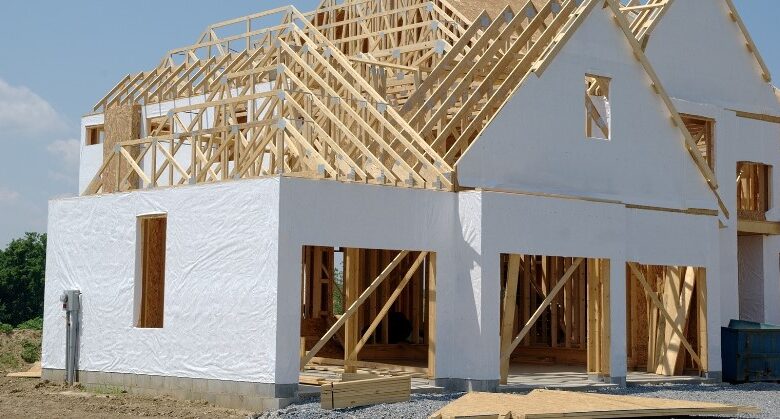Strategies for Builders to Avoid Delays in Construction Timelines

Construction delays are a common challenge that can impact timelines, budgets, and client satisfaction. However, experienced builders know that delays can often be minimized or avoided with careful planning, clear communication, and flexibility. Below are essential strategies to keep construction projects running smoothly and on schedule.
1. Begin with a Detailed Project Plan
A detailed project plan is the backbone of any successful construction project. Builders should outline each phase, considering timelines for design, permits, ordering materials, scheduling subcontractors, and inspections. This plan sets clear expectations and helps make necessary adjustments without disrupting the schedule.
Essential Components of a Project Plan:
- Scope of Work:Define the project’s goals, deliverables, and boundaries.
- Detailed Timeline:Create a breakdown of tasks with start and end dates.
- Resource Allocation:Assign tasks to team members and contractors.
- Contingency Plans:Include time buffers for unforeseen issues like weather or supply delays.
2. Establish Clear Communication Channels
Communication is crucial to prevent misunderstandings and missed deadlines. Builders can avoid many delays by setting up strong communication with everyone involved, from clients to contractors. Regular updates, meetings, and project management software ensure everyone is informed and aligned.
Tips for Effective Communication:
- Weekly Updates:Schedule regular updates to keep everyone on the same page.
- Use of Digital Tools:Construction management software can track progress in real time.
- Single Point of Contact:Assign a dedicated contact for each project to streamline the information flow.
3. Build Strong Partnerships with Reliable Suppliers and Subcontractors
Delays often stem from unreliable suppliers or subcontractors. Builders should work only with vendors and contractors who have proven reliability and skill. It’s also beneficial to have backup suppliers and subcontractors available, ensuring smooth transitions if primary sources face challenges.
How to Build Reliable Partnerships:
- Supplier Relationships:Long-term partnerships often lead to better service.
- Vetting Process:Check references and reviews for subcontractors.
- Backup Resources:Maintain a list of backup suppliers for emergencies.
4. Prioritize Permits and Inspections Early
Permits and inspections are common sources of construction delays. Builders should begin the permitting process early, factoring in waiting periods and potential roadblocks. Being proactive in scheduling permits and inspections helps prevent downtime and allows the project to move forward seamlessly.
Streamlining Permitting and Inspections:
- Research Local Regulations:Familiarize yourself with codes and requirements early.
- Early Consultation with Inspectors:Coordinate with inspectors early to avoid last-minute scheduling issues.
- Smart Scheduling:Arrange tasks so that progress can continue while permits are pending.
5. Prepare for Unexpected Events
Unforeseen events such as weather disruptions, supply chain issues, or unexpected structural challenges can affect timelines. Builders should create contingency plans that include time and budget buffers to absorb these impacts without compromising the overall project schedule. Adding a 10-15% buffer for time and costs is often enough to account for most unexpected events.
Building Effective Contingency Plans:
- Set Aside a Budget Buffer:Allocate funds for unexpected expenses.
- Add Time Buffers:Build extra time into critical tasks.
- Source Alternatives:Have backup options for essential materials to avoid delays.
6. Leverage Technology for Monitoring and Efficiency
Construction management software, like Procore or Buildertrend, can improve efficiency and keep projects on schedule. These tools provide real-time updates, track progress, manage documents, and forecast delays. Builders can use these platforms to stay informed and address issues as soon as they arise.
Recommended Technology Tools:
- Scheduling Software:For managing and tracking timelines effectively.
- Document Management:A digital repository for blueprints, permits, and other key documents.
- Cost Tracking:Tools that monitor budgets in real time help prevent overspending.
7. Optimize Site Management and Safety
A well-managed construction site is both efficient and safe. Builders should maintain organized workflows and follow safety protocols to prevent accidents and minimize disruptions. This includes ensuring proper storage of materials, organizing waste disposal, and scheduling regular safety checks.
Best Practices for Site Management:
- Daily Safety Briefings:Reinforce safety protocols every day.
- Material Storage:Store materials in accessible locations to avoid delays.
- Waste Management:Regularly clear the site to maintain a safe and productive environment.
8. Encourage Client Involvement for Quick Decision-Making
Client involvement is critical to avoiding delays, especially when it comes to timely decisions. Builders should educate clients on the importance of adhering to decision-making deadlines, such as selecting materials or approving design changes. A project calendar can help clients stay informed about upcoming decisions that could impact the timeline.
Engaging Clients Effectively:
- Set Clear Timelines:Share a calendar with deadlines for key client decisions.
- Educational Materials:Help clients understand how delays affect the project.
- Decision-Making Support:Offer guidance on materials and design to speed up choices.
For those looking to work with a custom home builder Lemon Grove CA, partnering with a reliable team can help navigate these processes smoothly. Building a custom home comes with many decisions, and an experienced builder can make the experience more efficient and enjoyable by keeping projects on schedule and within budget.
9. Conduct Regular Quality Control Checks
Quality control checks reduce the need for rework, which can lead to significant delays. By inspecting work at each phase, builders can address potential issues early, ensuring they don’t disrupt the overall timeline. Involving clients in these checks can also enhance transparency and help manage expectations.
Quality Control Practices:
- Phase Inspections:Check completed work at every project stage.
- Client Walkthroughs:Engage clients during inspections to confirm satisfaction.
- Immediate Corrections:Address any issues promptly to prevent escalation.
Conclusion
Construction delays are a common challenge, but with the right strategies, they don’t have to derail your project. Through detailed planning, reliable partnerships, proactive permitting, and the use of technology, builders can keep their projects on track. By incorporating these strategies, construction teams can provide a smoother experience for clients, delivering projects on time and with fewer unexpected disruptions.




